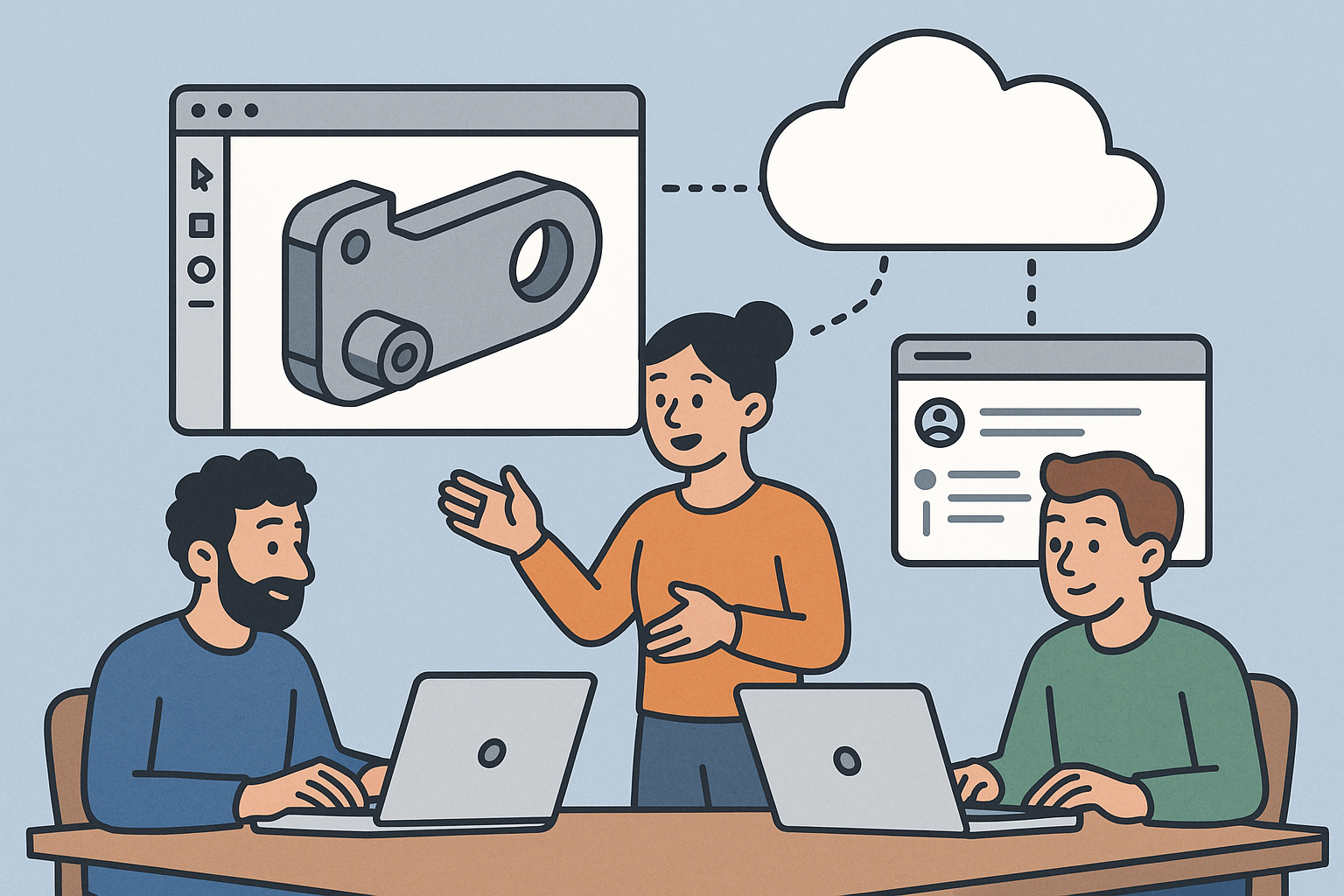Your Cart is Empty
Customer Testimonials
-
"Great customer service. The folks at Novedge were super helpful in navigating a somewhat complicated order including software upgrades and serial numbers in various stages of inactivity. They were friendly and helpful throughout the process.."
Ruben Ruckmark
"Quick & very helpful. We have been using Novedge for years and are very happy with their quick service when we need to make a purchase and excellent support resolving any issues."
Will Woodson
"Scott is the best. He reminds me about subscriptions dates, guides me in the correct direction for updates. He always responds promptly to me. He is literally the reason I continue to work with Novedge and will do so in the future."
Edward Mchugh
"Calvin Lok is “the man”. After my purchase of Sketchup 2021, he called me and provided step-by-step instructions to ease me through difficulties I was having with the setup of my new software."
Mike Borzage
Design Software History: Evolution of Design Software: From Early Innovations to Modern Trends
September 03, 2024 5 min read


Introduction
The evolution of design software is a fascinating journey marked by significant technological advancements and visionary individuals. By examining the historical transitions and milestones in this field, we can appreciate the profound impact that design software has had on various industries.
This article delves into the intricate history of design software, exploring key innovations, influential figures, major milestones, and future trends. By understanding the past, we can better appreciate the present and anticipate the future of design technologies.
Early Innovations and Foundational Concepts
The history of design software begins with pioneering technologies that laid the groundwork for today's sophisticated tools. Early innovations were driven by the need for more efficient design processes in fields like engineering and architecture.
Pioneering Technologies
In the early stages, innovations such as CAD (Computer-Aided Design) were crucial. One of the earliest breakthroughs was Ivan Sutherland's Sketchpad, developed in 1963. Sketchpad introduced graphical user interaction with a computer, allowing designers to create and manipulate images directly on a screen.
Another significant innovation was the development of Bezier curves in the 1960s by Pierre Bézier, an engineer at Renault. Bezier curves revolutionized the way curves and surfaces were represented in computer graphics, providing a mathematical foundation for more complex designs.
Influential Figures and Companies
Several individuals and companies played pivotal roles in shaping the design software industry. Ivan Sutherland, often regarded as the father of computer graphics, made substantial contributions with his work on Sketchpad. John Walker, the co-founder of Autodesk, was instrumental in popularizing CAD software with the release of AutoCAD in 1982.
Companies like Autodesk and Dassault Systèmes were trailblazers in the industry. Autodesk's AutoCAD became the de facto standard for 2D and 3D design, while Dassault Systèmes introduced CATIA, a highly advanced CAD system used extensively in aerospace and automotive design.
Core Technological Developments
Foundational technologies such as Bezier curves and NURBS (Non-Uniform Rational B-Splines) were instrumental in advancing design software. NURBS, developed in the 1970s, allowed for the creation of complex, smooth surfaces, which were essential for automotive and aerospace design.
The transition from 2D to 3D modeling marked a significant milestone in the evolution of design software. Early CAD systems focused primarily on 2D drafting, but the development of 3D modeling enabled more realistic and detailed representations of objects, transforming the design process.
Major Milestones in Design Software Development
Significant Software Releases
Several landmark software releases have had a profound impact on the design software industry. CATIA, developed by Dassault Systèmes in the late 1970s, was one of the first CAD systems to offer advanced 3D modeling capabilities. It became a standard tool in the aerospace and automotive industries.
AutoCAD, released by Autodesk in 1982, revolutionized the field by making CAD accessible to a broader audience. Its user-friendly interface and extensive functionality made it the go-to software for architects, engineers, and designers.
SolidWorks, introduced in 1995, brought parametric modeling to the forefront. Its intuitive interface and powerful features made it a favorite among mechanical engineers and product designers.
Technological Advancements
The introduction of parametric and direct modeling represented significant technological advancements in design software. Parametric modeling, which allows designers to define relationships between different elements of a design, enabled more efficient and flexible design processes. Direct modeling, on the other hand, provided a more intuitive approach by allowing users to manipulate geometry directly without the need for complex parameters.
The evolution of user interfaces and interaction methods also played a crucial role in the advancement of design software. Early CAD systems relied on command-line interfaces, but the development of graphical user interfaces (GUIs) made design software more accessible and user-friendly.
Applications in Various Industries
Design software has had a transformative impact on various industries. In aerospace, CAD systems like CATIA have been used to design complex aircraft structures with unprecedented precision. In the automotive industry, software like SolidWorks has enabled the creation of intricate vehicle components and assemblies.
In architecture, design software has revolutionized the way buildings are conceptualized and constructed. Tools like AutoCAD and Revit have streamlined the drafting and modeling processes, allowing architects to create detailed and accurate representations of their designs.
- Aerospace: Use of CATIA for designing aircraft structures.
- Automotive: Application of SolidWorks for vehicle component design.
- Architecture: Adoption of AutoCAD and Revit for building design and modeling.
Modern and Future Trends
Contemporary Influences
The role of AI and machine learning in modern CAD systems cannot be overstated. These technologies have enabled the automation of various design tasks, from generating design variations to optimizing complex structures. AI-driven tools like generative design allow designers to explore a vast array of design options and choose the most efficient solutions.
Cloud-based solutions and collaborative tools have also become increasingly important in the modern design landscape. Platforms like Fusion 360 and Onshape provide cloud-based CAD solutions that enable real-time collaboration and remote access, making it easier for teams to work together on complex projects.
Additive Manufacturing and Beyond
The rise of 3D printing and additive manufacturing has had a profound impact on design processes. These technologies enable the creation of complex geometries that would be difficult or impossible to produce using traditional manufacturing methods. Design software has evolved to incorporate tools specifically for additive manufacturing, allowing designers to optimize their models for 3D printing.
Integration of simulation and real-time rendering technologies has further enhanced the capabilities of design software. Simulation tools allow designers to test and validate their designs in a virtual environment, reducing the need for physical prototypes. Real-time rendering tools provide photorealistic visualizations of designs, enabling designers to present their ideas more effectively.
Future Prospects
Looking ahead, several emerging technologies have the potential to shape the future of design software. Quantum computing, with its ability to perform complex calculations at unprecedented speeds, could revolutionize the way we approach design problems. Digital twins, which are virtual replicas of physical objects, offer new possibilities for real-time monitoring and optimization of designs.
These technologies are poised to further enhance the capabilities of design software, enabling more efficient and innovative design processes. The integration of AI, cloud computing, and simulation tools will continue to drive the evolution of design software, opening up new possibilities for designers and engineers.
- Quantum computing: Potential to revolutionize design calculations.
- Digital twins: Real-time monitoring and optimization of designs.
- AI and machine learning: Enhanced automation and generative design capabilities.
Conclusion
In summary, the history of design software is marked by significant milestones and technological advancements that have transformed the way we approach design. From the early innovations like Sketchpad and Bezier curves to the modern influences of AI and cloud computing, design software has continually evolved to meet the needs of various industries.
Understanding the historical evolution of design software is essential for appreciating its current capabilities and anticipating future developments. By reflecting on past advancements, we can gain valuable insights into the ongoing trends and future prospects in the field.
As we move forward, it is crucial to stay informed about the latest developments in design software and embrace the continuous evolution of this dynamic field. The future of design software holds immense potential, and it will undoubtedly continue to shape the way we design and create in various industries.
Also in Design News

Design Software History: Collaboration in Design Software: From File-Based PDM to Cloud-Native Co-Editing and Design Threads
December 23, 2025 9 min read
Read More
End-to-End Encryption for CAD/PLM: Protecting Design IP in Cloud Workflows
December 23, 2025 13 min read
Read More
Cinema 4D Tip: Camera-Based Projection Mapping Workflow for Cinema 4D
December 23, 2025 2 min read
Read MoreSubscribe
Sign up to get the latest on sales, new releases and more …


